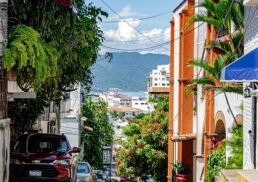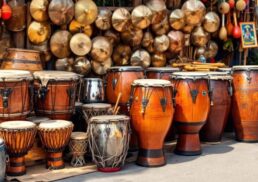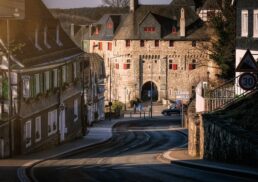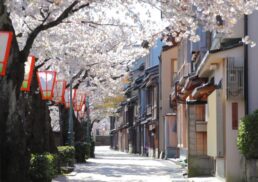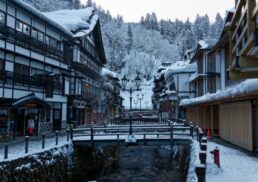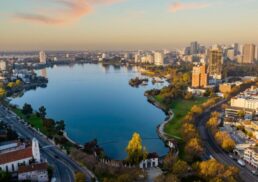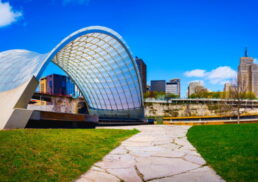Lahore, Pakistan’s storied metropolis, invites explorers to traverse its rich history and contemporary vigor. With timeless Mughal sites and dynamic urban culture, this city isn’t just a destination; it’s an experience. Delve into the city of Lahore and see why it’s revered as the cultural heart of the nation.
Table of Contents
Key Takeaways
Lahore has a historical and legendary background dating back over 2000 years, with significant development under the Mughal Empire, where monumental architecture such as Lahore Fort and Shalimar Gardens established the city’s reputation for grandeur and aesthetics.
The city’s cultural depth extends beyond architecture, with Lahore being the cultural heart of Pakistan known for its vibrant arts scene, educational institutions, culinary traditions, and as a custodian of South Asia’s rich history through venues like the Lahore Museum.
Lahore’s contemporary urban development is characterized by a dedication to preserving its historic landmarks and culture while accommodating growth through infrastructure projects like the Lahore Metrobus system and the Ravi Riverfront City development.
Exploring Lahore’s Roots: Tracing the City’s Ancient Past

Whispers of Lahore’s mythical origins can be heard in the tales of Loh, the son of the Hindu deity Rama, who is said to have laid the city’s foundations. These legends intertwine with the threads of historical evidence, positioning Lahore’s inception somewhere between the 1st and 7th centuries A.D., a claim substantiated by the writings of the Greek geographer Ptolemy. This narrative is further reinforced by Sir Robert Montgomery’s observations, which mark Lahore’s rise to prominence during the 2nd and 4th centuries, attesting to its ancient and significant status.
The city’s storied past, estimated to be over 2000 years old, is a testament to its enduring importance through the corridors of time. It is fascinating how Lahore’s founding is entwined with several legends, including its ties to the Hindu god Ram’s lineage, placing its historical roots in the mists of early civilization and myth. Lahore’s ancient heritage is a prelude to the grandeur that was to follow, as the city became a pivot of power, culture, and architecture under the Mughal rule.
The Mughal Majesty: Lahore’s Imperial Heritage

The zenith of Lahore’s architectural splendor came under the Mughal Emperors, who envisioned the city as a canvas for their imperial expressions. The Mughals, with their penchant for grandeur, left an indelible mark on Lahore, erecting monuments that continue to narrate stories of a bygone era’s majesty and the influence of the Mughal court. One such Mughal emperor played a significant role in shaping the city’s landscape, with the support of mughal nobles who shared his vision.
From the intricacies of the Wazir Khan Mosque to the colossal expanse of the Badshahi Mosque, the legacy of Mughal architecture in Lahore, the Mughal capital, is a testament to the empire’s aesthetic and cultural achievements.
The Royal Fort: A Testament to Mughal Splendor
The Royal Fort of Lahore, or the Lahore Fort, is a monumental symbol of the Mughal Empire’s zenith, with significant reconstructions during the 17th century that highlight the cultural and aesthetic prowess of the period. The evolution of the fort’s architecture is a journey through time, from Akbar’s robust red sandstone to Shah Jahan’s exquisite marble inlays and mosaic decorations, chronicling the progression of Mughal architectural styles. It stands as a proud witness to the lavish lifestyles once enjoyed by Mughal emperors and nobles.
The fortress’s grandeur is further exemplified by:
The Alamgiri Gate, an iconic symbol of Lahore constructed by Emperor Aurangzeb, reflecting his imperial title ‘Alamgir’
The massive Picture Wall, commissioned by Emperor Jahangir, adorned with glazed tiles, faience mosaics, and frescoes
Palaces and mosques within its walls, embellished with luxurious mosaics and gilt, embodying the opulence of Mughal elements.
Below the resplendent Sheesh Mahal lies the innovative Summer Palace, an architectural marvel with an advanced cooling system designed to provide comfort during the scorching summers. The Lahore Fort’s significance is globally recognized, earning it a place alongside the Shalimar Gardens as a UNESCO World Heritage Site in 1981, marking it as an exceptional representation of Mughal monuments.
Wazir Khan Mosque: A Mosaic of Mughal Artistry
Within the heart of Lahore’s old city stands the Wazir Khan Mosque, a masterpiece of Mughal architecture commissioned by Shah Jahan. It was constructed by Hakim Shaikh Ilm-ud-din Ansari, the Governor of Punjab, serving as the congregational mosque for the Emperor’s Friday prayers. The mosque’s construction, which began in 1634 and took seven years to complete, incorporated the tomb of an ancient saint dating back to the 13th century, weaving historical threads into its very fabric. Its four corner minarets stretch towards the heavens, marking the Lahore skyline with its 86.17 x 50.44 meters of spiritual and artistic presence.
Renowned for its meticulous tile mosaic work, fresco paintings, and intricate calligraphy, the Wazir Khan Mosque is a canvas of artistic detail and splendor. The design harmoniously blends Islamic, Persian, Hindu, and Mongol elements, reflecting the rich cultural diversity of the Mughal Empire. It is a place where architecture and artistry come together in celebration of the divine, a testament to Lahore’s historical significance and its rulers’ commitment to culture and faith.
Shalimar Garden: Mughal Empire’s Botanical Gem
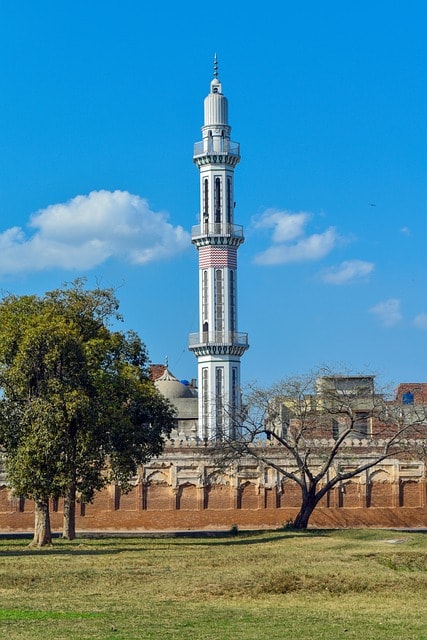
Shalimar Gardens is a verdant oasis that encapsulates the Mughal Empire’s landscape architecture at its best. Constructed under the patronage of Shah Jahan, the gardens are a recognized UNESCO World Heritage Site, offering a glimpse into the zenith of Mughal garden design. The gardens were envisaged as a Persian paradise, a harmonious sanctuary where humanity and nature coexist in a tapestry of beauty, originally created for the entertainment of the royal family and later opened to the public.
The sophisticated rectilinear layout of the gardens, balanced with pavilions, trees, and reflective water basins, showcases the Mughal’s adeptness in landscape architecture. With a design that marries natural beauty with artificial creations like cascades and terraces, the Shalimar Gardens are a testament to the Mughal’s skillful integration of garden design with the essence of nature.
Featuring elaborate waterworks with 410 fountains, the gardens not only contribute to the overall aesthetics but also provide a cooling environment during Lahore’s hot summer months. The Shalimar Gardens are a symbol of the Mughal Empire’s botanical ingenuity, a place where the grandeur of the past meets the tranquility of nature, offering respite and inspiration to its visitors.
The Sikh and British Epochs: Layers of Lahore’s History
The tapestry of Lahore’s history, located in the Punjab Province, is further layered by the Sikh rule under the Sikh Empire, which rose to prominence under the leadership of Maharaja Ranjit Singh, making Lahore its capital in 1802 after capturing the city in 1799. This period of governance was marked by a flourishing of religious diversity, with the administration incorporating notable generals and officials from various communities. The Sikh period left its mark within the Walled City through significant religious structures like the Samadhi of Ranjit Singh and the Gurdwara Janam Asthan Guru Ram Das.
Transitioning from the Sikh epoch, the British colonial era reshaped Lahore’s urban landscape. Numerous original gates of Lahore’s Walled City, remnants of the Mughal era fortifications, met their demise during this time, though some have been restored to their former glory in recent years. The colonial imprint on Lahore introduced new architectural styles and infrastructural developments, further enriching the city’s historical layers.
As Lahore evolved under the Sikh and British influences, it became an amalgamation of various cultural and architectural influences, each contributing to the city’s diverse character. The remnants of these eras stand today, offering a window into the city’s complex past, and continue to influence the cultural fabric of Lahore.
The Cultural Heart of Pakistan: Lahore Today
Lahore’s pulsating heart beats strongest in its thriving contemporary arts scene, with institutions like the National College of Arts and Beaconhouse National University nurturing the creative talents of Pakistan. The city bursts with a kaleidoscope of creative expressions that reflect its diverse ethnic, religious, and linguistic composition. Initiatives such as the Lahore Biennale Foundation and the Lahore’s third biennial, ‘Of Mountains and Seas,’ demonstrate the city’s commitment to contemporary art and socio-ecological discourse.
Renowned artists like Rashid Rana and Neo-Miniature pioneers Imran Qureshi and Aisha Khalid call Lahore home, infusing both local and global motifs into their work. As the epicenter of Pakistan’s arts and literary scene, Lahore hosts more colleges and universities than any other city in Pakistan, perpetuating a profound appreciation for:
art
poetry
architecture
music
Lahore Museum: A Treasure Trove of Pakistan’s History
The Lahore Museum is a bastion of history, safeguarding the vast tapestry that is South Asia’s past. Within its walls, extensive ethnographic and artifact collections unravel stories of civilizations that walked the lands of Pakistan. The museum’s newer galleries, dedicated to 20th-century art, are a testament to its evolving role in documenting and displaying the artistic journey of the nation.
The museum’s significance extends beyond its impressive collections; it serves as an educational resource, a place of reflection, and a bridge connecting Pakistan’s rich historical narrative to its present and future generations. It is where history comes alive, where the whispers of the past are preserved for posterity.
As a cultural custodian, the Lahore Museum plays a pivotal role in the cultural heart of Pakistan, offering visitors a window into the country’s soul. Its collections are a vibrant chronicle of the land’s legacy, a beacon for those who seek to understand the depth and diversity of Lahore’s heritage.
Food Street and Culinary Delights
Beyond the grandeur of its architecture and the richness of its arts, Lahore’s soul is perhaps most deliciously experienced through its culinary traditions. The city’s Food Street, located near the historic Delhi Gate, is an epicurean paradise where the aromas of spices blend with the laughter of locals and the chatter of tourists. Here, dishes like Phajje ke Paye, a spicy broth of beef or mutton trotters, Tawa Chicken, and Naan Channe invite food lovers to indulge in a symphony of flavors that are quintessentially Lahori.
These culinary delights are more than just meals; they are stories on a plate, each bite a testament to Lahore’s rich history and cultural fusion. Recognized as the heart of Pakistan’s rich culinary scene, the food of Lahore offers a true taste of the region’s vibrant culture. The food streets of Gawalmandi and Anarkali are not just venues for dining; they are social hubs where people from all walks of life converge to share in the joy of food and community.
Lahore’s food scene is a reflection of its spirit – warm, welcoming, and full of life. Whether it’s the bustling street vendors or the traditional dhabas, each corner of the city offers a unique culinary adventure, making Lahore a destination for gourmands around the world.
Check out A Snapshot Of Lahore’s Street Food.
The Old Walled City: A Living Museum
The Old Walled City of Lahore, often referred to simply as the inner city, is a living museum that embodies centuries of history. Fortified with a mud wall during the medieval era, it has long stood as the cultural heart of the Punjab region, offering visitors a journey through time. Landmarks such as the Wazir Khan Mosque and the Roshnai Gate serve as historical beacons along the city’s Royal Trail, connecting the Delhi Gate to the Lahore Fort.
Within the labyrinthine alleys of the Old Walled City lie historic bazaars like Anarkali, where traditional wares such as embroidered garments, gold and silver jewelry, and leather products beckon to those in search of authentic Punjabi craftsmanship. The Shah Alami Bazaar, with its dense urban fabric, is a testament to the city’s rich commercial history and its role as a trade hub in days gone by.
The Walled City is also known for its food streets, such as Gawalmandi and Anarkali, which offer a glimpse into Lahore’s profound culinary history.
The Walled City is not just a cluster of ancient structures; it is a vibrant community where the past and present coalesce, offering an immersive experience that captures the essence of Lahore.
Lahore’s Green Spaces: The City’s Lungs
Amidst the urban sprawl of Lahore, the city’s green spaces serve as sanctuaries of tranquility and natural beauty. These parks and gardens, often referred to as the ‘lungs of the city’, play a crucial role in the urban ecosystem, offering respite from pollution and the dense urban environment. Historical green spaces like the Shalimar Gardens and Lawrence Gardens, with their Mughal-era designs, are not only aesthetically pleasing but also culturally significant.
Newer additions to Lahore’s green tapestry, such as Model Town Park and Jilani Park, reflect the city’s ongoing commitment to maintaining and expanding its verdant spaces. Bagh-e-Jinnah, previously known as Lawrence Gardens, beautifully encapsulates the city’s historical significance while adapting to contemporary needs. The botanical diversity of places like Jallo Botanical Garden contributes to the city’s biodiversity and environmental health.
These green havens are more than just picturesque landscapes; they are social spaces where activities like jogging, walking, and family picnics foster health and well-being among residents. Public events, cultural festivals, and flower shows held in these parks further enrich the social and cultural life of Lahore. As the city continues to grow, these green spaces are increasingly cherished for their ability to connect people with nature and each other.
Lahore’s Infrastructure: Connecting the City
As Lahore continues to expand as the second largest city in Pakistan’s Punjab province, its infrastructure plays a pivotal role in connecting its diverse neighborhoods and facilitating the daily lives of its residents. The Lahore Metrobus system, inaugurated in 2013, stands as a modern marvel of public transportation, designed to efficiently shuttle passengers across the Lahore District and its adjoining suburban areas. With a 28.7 km corridor along Ferozepur Road, the system includes amenities such as escalators and subway-style station access, ensuring safety and convenience for its commuters.
Supporting over 180,000 passengers daily, the Metrobus system embodies Lahore’s commitment to innovative and sustainable urban transport. It employs advanced technologies like e-ticketing and the Intelligent Transportation System for seamless travel. Adhering to the Institute for Transportation and Development Policy standards, the system features automated off-board fare collection and a precision bus docking system, exemplifying Lahore’s infrastructural ambitions.
The ongoing expansion of the Metrobus system, with plans to extend its reach by an additional 15 km, underscores the city’s proactive approach to addressing urban challenges such as traffic congestion and public transportation accessibility. This modern infrastructure, rooted in the colonial developments of the past, continues to shape Lahore’s urban future, ensuring that it remains a connected and dynamic metropolis.
Festivals and Celebrations: Lahore’s Vibrant Spirit
The vibrancy of Lahore’s spirit is perhaps best captured in its array of festivals and celebrations. Some of the notable events include:
Eid ul-Fitr and Eid ul-Adha, which are observed with great fervor, reflecting the city’s Islamic traditions
Eid-e-Milad-un-Nabi, commemorating the birthday of Prophet Muhammad, is celebrated with festive decorations and processions that bring the streets of Lahore to life
Lahore also hosts concerts, art exhibitions, and literature festivals that spotlight its artistic and intellectual energy
These events showcase the rich cultural and religious heritage of the city.
One of the most enchanting events is Mela Chiraghan or the Festival of Lights, a three-day annual event honoring the urs of the Punjabi poet and Sufi saint Shah Hussain. The festival illuminates the city with a mesmerizing display of lights, music, and poetry, drawing people from all over to partake in the celebrations. It is a time when Lahore’s historic roots in Sufi traditions and its enduring love for the arts are on full display.
The festivals and celebrations of Lahore are a reflection of its diverse and inclusive nature, where people of all faiths and backgrounds come together to rejoice in shared cultural experiences. These events not only bring joy and unity to the city’s inhabitants but also serve to strengthen Lahore’s identity as the cultural heart of Pakistan.
The Future of Lahore: Development and Preservation
Looking to the horizon, the future of Lahore is being shaped by ambitious development projects and a commitment to heritage preservation. The Ravi Urban Development Authority is at the forefront of these efforts, spearheading the Ravi Riverfront City project, which aspires to be the world’s largest riverfront city spanning 46 kilometers along the Ravi River. This development is envisioned to accommodate over 10 million residents, designed to alleviate urban problems such as overcrowding and traffic congestion, while also tackling environmental concerns.
Sustainability is at the core of Ravi Riverfront City’s design, with plans to:
rehabilitate the Ravi River
establish specialized zones for industries, education, and entertainment
ensure that Lahore’s cultural and heritage values are upheld
Additionally, initiatives like the Shahi Guzargah Project, which saw the restoration of the Royal Passage from Wazir Khan Mosque to Delhi Gate, exemplify the city’s dedication to preserving its historical landmarks, including those from the Delhi Sultanate era.
As Lahore strides into the future, the balance between development and preservation remains a key focus. Projects that integrate modern urban design with a respect for the city’s rich historical heritage ensure that Lahore’s evolution will continue to honor its past while embracing the possibilities of tomorrow.
Summary
Lahore, with its intricate mosaic of history, culture, and modernity, stands as a testament to the resilience and vibrancy of its people. From the ancient roots of a civilization that has witnessed the rise and fall of empires, to the bustling streets filled with the aroma of culinary delights and the sounds of contemporary art, Lahore is a city that embraces its past while looking confidently to the future. It is a city where history is not just remembered; it is lived, celebrated, and continuously shaped by its inhabitants. As the cultural heart of Pakistan, Lahore’s legacy is a beacon that will continue to inspire and attract people from around the globe.
Frequently Asked Questions
What is the mythical origin of Lahore?
The mythical origin of Lahore is believed to be founded by Loh, the son of Rama from Hindu mythology, also known as Prince Lava. This mythological connection adds to the rich cultural heritage of Lahore.
What architectural achievements are the Mughals known for in Lahore?
The Mughals are known for architectural wonders in Lahore such as the Lahore Fort, Wazir Khan Mosque, and the Shalimar Gardens, showcasing their splendor and artistry.
How did the Sikh Empire influence Lahore?
The Sikh Empire, under Maharaja Ranjit Singh, influenced Lahore by making it its capital and constructing significant Sikh religious structures within the Walled City, contributing to its diverse religious and cultural landscape.
What is the Lahore Museum known for?
The Lahore Museum is known for its extensive collections preserving the rich history of South Asia, including ethnographic and artifact collections, and a dedicated gallery for 20th-century art.
What is the significance of the Ravi Riverfront City project for Lahore’s future?
The Ravi Riverfront City project is significant for Lahore’s future as it aims to create the world’s largest riverfront city, addressing urban challenges and shaping the city’s future while preserving its cultural heritage.


